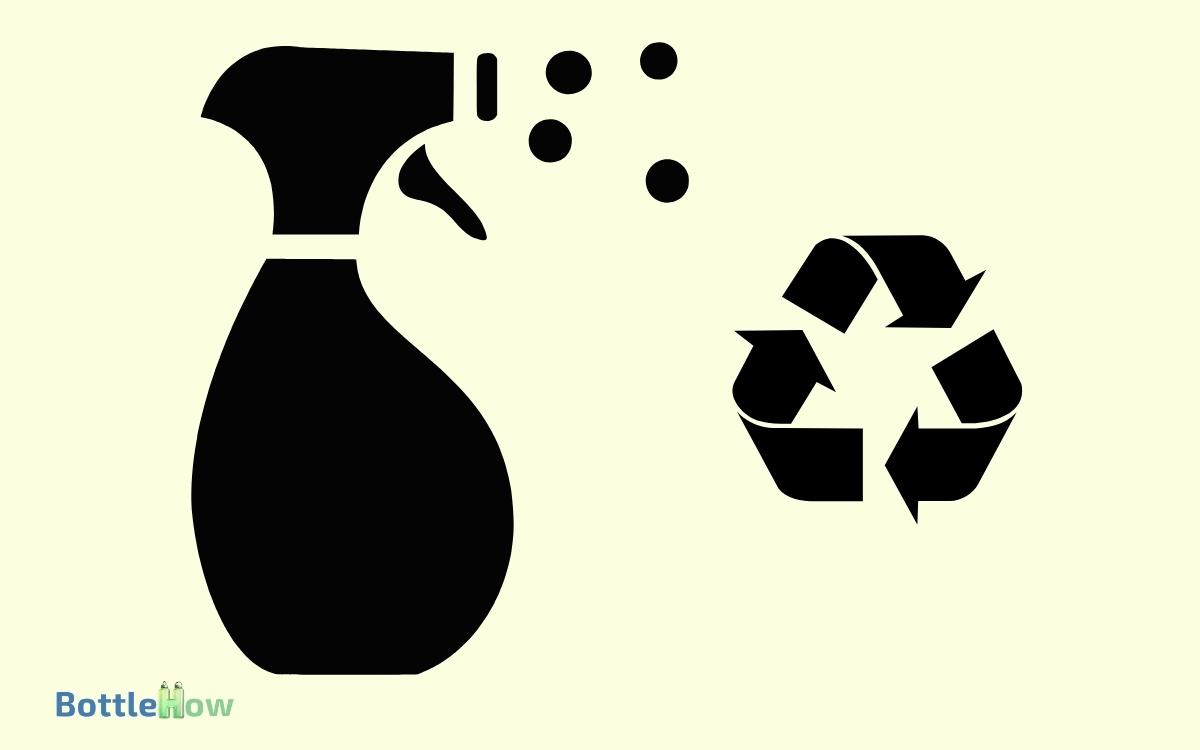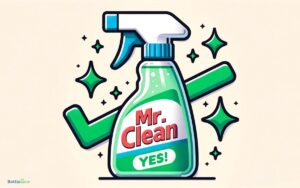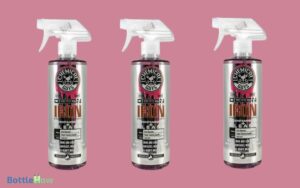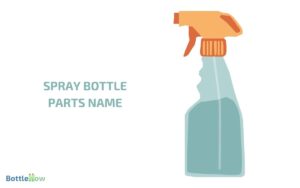Are Spray Bottles Recyclable? Yes!
Yes, spray bottles are recyclable, but you’ve got to handle them correctly. Most spray bottle bodies are made from recyclable plastics like PET or HDPE.
However, the trigger mechanisms often include a metal spring and other materials that complicate the process.
- You should first make sure the bottle is completely empty and clean.
- Next, disassemble it, separating the trigger and bottle.
- Recycle the bottle with plastics and the trigger with metals, if possible.
- Not all recycling centers accept mixed components, so it’s important to check your local facility’s guidelines.
Uncovering more about specific local recycling processes could offer additional insights.

Key Takeaways
Understanding Spray Bottle Components
To fully grasp recycling possibilities, understanding that spray bottles typically consist of multiple components, including a plastic body, a trigger mechanism, and a metal spring is important.
As you explore the details, you’ll find these bottles aren’t just simple containers. The trigger mechanism often contains not only a spring, but also valves and tubes, which are necessary for the spray function.
These parts can be made from different materials, complicating the recycling process. It’s vital to recognize these complexities to effectively contribute to recycling efforts.
By dismantling these bottles and sorting their components, you can make sure that each piece is recycled properly, helping to reduce waste and support environmental sustainability.
Types of Plastics in Spray Bottles
You’ll find that spray bottles are primarily made from various types of plastics, each affecting recyclability in different ways.
Understanding these materials is important to make sure you’re making environmentally conscious choices.
Here’s a quick look at the common plastics used:
| Plastic Type | Symbol | Common Use in Spray Bottles |
|---|---|---|
| Polyethylene Terephthalate | PET | Body of the bottle |
| High-Density Polyethylene | HDPE | Trigger, nozzle |
| Polypropylene | PP | Gaskets, pump mechanism |
| Low-Density Polyethylene | LDPE | Tubes inside the bottle |
| Polystyrene | PS | Supportive components |
Each type has distinct properties and recycling challenges. It’s vital to recognize these differences to promote better recycling practices and support environmental sustainability efforts effectively.
Recycling Process for Spray Bottles
Understanding the types of plastics used in spray bottles helps you better grasp how they’re recycled.
Identify Plastic Types: Determine if the spray bottle is made from polyethylene terephthalate (PET) or high-density polyethylene (HDPE).
Prepare the Bottle:
- Ensure the bottle is empty and clean.
- Remove any triggers or pumps, as these parts are often made from different materials.
Place in Recycling Bin: Put the plastic body of the bottle into your recycling bin.
Sorting: At recycling facilities, plastics are sorted by type and color.
Shredding: The sorted plastics are shredded into small pieces.
Washing: The shredded pieces are washed to remove any contaminants.
Melting and Pelletizing: The clean plastic pieces are melted down and formed into pellets.
Manufacturing New Products: These plastic pellets are used to produce new plastic products, promoting a circular economy and reducing waste.
Challenges in Recycling Spray Bottles
Despite their recyclability, spray bottles pose specific challenges due to their composite components which complicate the recycling process.
You’ll find that these bottles often consist of different plastics, metals, and sometimes rubber elements. Each material requires a separate recycling method.
The trigger mechanism, for instance, contains springs and valves made from metals that aren’t processed the same way as the plastic bottle. Additionally, the presence of product residues can further hinder recycling efforts.
It’s crucial to thoroughly clean the bottles before recycling, but even then, the complexity of disassembling each part can discourage recycling centers from accepting them.
This situation demands your attention and action to make sure that these useful yet troublesome items don’t end up in landfills unnecessarily.
Local Recycling Program Guidelines
Before recycling spray bottles, you should refer to your local recycling program guidelines to guarantee compliance with specific requirements and accepted materials. Many programs provide detailed lists of acceptable plastics, including the resin identification codes. Check if your spray bottle’s plastic type is accepted.
Additionally, some programs might require you to remove non-recyclable components, such as triggers or metal springs.
Adhering to local guidelines assures the recycling process remains efficient and contamination-free. Contact your local waste management authority for precise instructions or visit their website for detailed recycling protocol.
Innovative Recycling Solutions
Innovative recycling solutions, such as advanced sorting technologies and chemical recycling methods, are transforming how we manage spray bottle waste. These approaches guarantee materials are efficiently processed and repurposed, reducing environmental impact.
You can leverage these methods to contribute to a sustainable future.
Key innovations include:
- Artificial Intelligence (AI) Sorting: AI can accurately identify and separate different types of plastics, enhancing recycling rates.
- Chemical Recycling: Breaks down plastics into their chemical components, allowing for the creation of new, high-quality materials.
- Deposit Return Schemes: Incentivizes consumers to return used bottles, ensuring they’re recycled properly.
- Biodegradable Alternatives: Developing spray bottles from materials that decompose naturally reduces long-term waste.
Implementing these strategies can greatly improve spray bottle recycling efforts.
Alternative Disposal Options
Given the recycling challenges posed by spray bottles, let’s explore some alternative disposal options that can mitigate environmental impact. You could start by repurposing these bottles for other uses around your home or community.
For instance, clean them thoroughly and refill them with homemade cleaning solutions or water for plant misting. This not only extends the life of the spray bottle but also reduces the demand for new plastics.
Additionally, consider participating in take-back programs, which some manufacturers offer. These programs are specifically designed to handle complex materials and components, ensuring that every part of the spray bottle is either reused or properly recycled.
By choosing such alternatives, you’re actively contributing to a circular economy and significantly reducing your environmental footprint.
Conclusion
So, you’ve learned that recycling spray bottles isn’t as simple as tossing them into the recycling bin. Many local recycling programs have specific guidelines for handling these items, especially if they previously contained chemicals. For example, a roundup in a spray bottle may require special disposal methods to prevent contamination. Always check with your local waste management authority to ensure you’re recycling properly.
Given their varied plastic types and complex components, it requires more effort to make sure they don’t end up in a landfill.
Surprisingly, the same innovative spirit that created these convenient dispensers also inspires better recycling techniques and alternative disposal options.
It’s no coincidence that as you become more informed, you can make greener choices that contribute greatly to environmental conservation.






